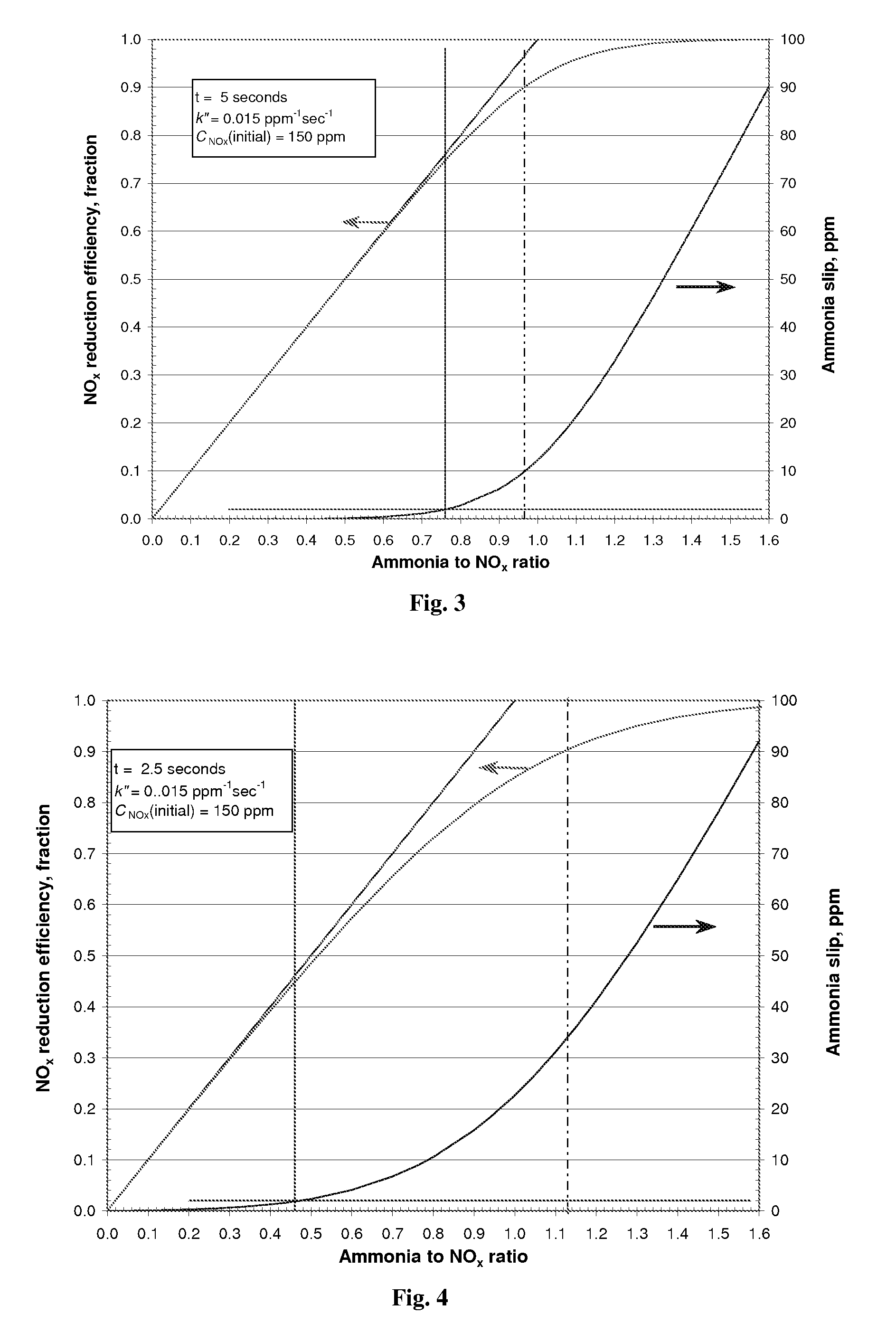Enhancement of conventional SCR and SNCR processes with ammonia destruction catalyst
a technology of destruction catalyst and ammonia, which is applied in the direction of emission prevention, separation process, and flue gas purification components, can solve the problems of precious metal catalysts being less attractive, ammonia levels, and their potential to oxidize, so as to increase the efficiency and flexibility of control, increase the efficiency and flexibility, and increase the effect of nox removal
- Summary
- Abstract
- Description
- Claims
- Application Information
AI Technical Summary
Benefits of technology
Problems solved by technology
Method used
Image
Examples
Embodiment Construction
While the present invention will be described in terms of SCR and / or SNCR systems which use ammonia as the NOx reducing agent, since ammonia is frequently preferred for economic reasons, the present invention is not limited to ammonia based systems. The concepts of the present invention can be used in any system which uses an ammoniacal compound. As used in the present disclosure, an ammoniacal compound is a term meant to include compounds such as urea, ammonium sulfate, cyanuric acid, and organic amines as well as ammonia (NH3). These compounds could be used as reducing agents in addition to ammonia, but as mentioned above, ammonia is frequently preferred for economic reasons. Some non-ammoniacal compounds such as carbon monoxide or methane can be used as well, but with loss in effectiveness.
Although the present invention is described in relation to a boiler, or a fossil fuel boiler, it is not limited solely thereto. Instead, the present invention can be applied to any combustion s...
PUM
| Property | Measurement | Unit |
|---|---|---|
| temperature | aaaaa | aaaaa |
| temperature | aaaaa | aaaaa |
| operating temperatures | aaaaa | aaaaa |
Abstract
Description
Claims
Application Information
 Login to View More
Login to View More - R&D
- Intellectual Property
- Life Sciences
- Materials
- Tech Scout
- Unparalleled Data Quality
- Higher Quality Content
- 60% Fewer Hallucinations
Browse by: Latest US Patents, China's latest patents, Technical Efficacy Thesaurus, Application Domain, Technology Topic, Popular Technical Reports.
© 2025 PatSnap. All rights reserved.Legal|Privacy policy|Modern Slavery Act Transparency Statement|Sitemap|About US| Contact US: help@patsnap.com



